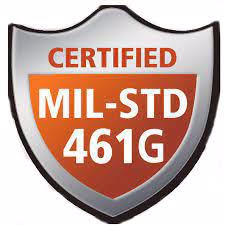|
Defence Solution
Powerful mobile computing platform packed in an ultra-rugged housing.
Defense and inspection are a 24/7, 365-day mission. Consequently, the rugged computing solutions need to be true ruggedness and meet the military standards MIL-STD 810F/G and MIL-STD 461E/F compliant. They can withstand extreme environmental conditions such as high and low temperature, shock, vibration, humidity and meet the requirements for controlling electromagnetic interference. The protection from electromagnetic interference is further enhanced by the application of ITO EMI shielding. Litemax uses the MIL-DTL-38999/1 military-grade power connectors to ensure reliable power and rugged mechanical performance. To meet the defense industry's regulatory requirements, Litemax offers defense computing solutions that undergo rigorous testing to ensure safety and performance beyond standard defense compliance. Litemax understands the needs of the defense industry and provides solutions to industrial challenges:
- Extreme environmental conditions:For MIL-STD-810G compliance, Litemax tests the product against extreme environmental conditions such as high and low temperature, shock, vibration, humidity.
- Electromagnetic interference:For MIL-STD-461F compliance, detailed testing specification ensures that the product meets the control of electromagnetic interference.
- Unstable power supply:Broad power input and isolation to protect Panel PC and rugged tablets from power surges.
safety and Standards
All Litemax defense products are built and tested according to defense standards MIL-STD-810 and MIL-STD-461.
|
|
|---|
|
 |
MIL-STD-461G stands as the definitive military testing standard, laying out precise requirements for ensuring electromagnetic compatibility (EMC) in devices and systems designed for and employed by the United States Department of Defense (DoD). Within the pages of MIL-STD-461G, a comprehensive suite of test procedures is meticulously detailed to adhere to the DoD's stringent regulations regarding electromagnetic emissions and susceptibility.
These test procedures are categorized into four distinct groups: radiated emissions (RE), conducted emissions (CE), radiated susceptibility (RS), and conducted susceptibility (CS).
Detection of illicit signals and electromagnetic interference assumes paramount importance in military operations, given that virtually every electronic device, from a common cellphone to a critical navigation component in a stealth jet, emits electromagnetic fields that could potentially jeopardize safety, operational efficiency, or secure communications.
To address this pressing concern, the DoD established the Electromagnetic Compatibility Program, with the overarching objective of integrating electromagnetic compatibility considerations into the research and development efforts of the defense industry. Over time, all three branches of the military have joined forces to develop updated and expanded iterations of the standard. This collaborative effort culminated in the latest version, MIL-STD-461G. |
|
|
|
|
|
MIL-STD-461 is a United States Defence Standard that describes how to test equipment for electromagnetic compatibility.
Specifically,MIL-STD-461F details testing specifications to ensure the conducted emissions (CE), conducted susceptibility (CS), radiated emissions (RE), and radiated susceptibility (RS) of a system can meet the requirements for the control of electromagnetic interference.
- MIL-STD-461 Method - CE101/CE102: Conducted Emissions
- MIL-STD-461 Method - RE101/RE102: Radiated Emissions
- MIL-STD-461 Method - CS101/CS106/CS109/CS114/CS115/CS116: Conducted Susceptibility
- MIL-STD-461 Method - RS101/RS103: Radiated Susceptibility
|
|
|
|
|
The "H" in MIL-STD-810H indicates that it is the eighth revision of the standard. Each revision of MIL-STD-810 incorporates updates and improvements based on advancements in technology and lessons learned from field experience.
MIL-STD-810H covers a broad range of environmental conditions, including temperature, humidity, altitude, vibration, shock, acceleration, rain, sand and dust exposure, solar radiation, fungus, and more. The standard provides detailed testing procedures and performance criteria for each environmental condition, allowing manufacturers to assess and demonstrate the durability and reliability of their equipment.
|
|
|
|
|
MIL-STD-810 test series are approved for use by all United States Department of Defense (DoD).
The standard describes environmental management and engineering processes that can be of enormous value to generate confidence in the environmental worthiness and overall durability of a system design.
- MIL-STD-810 Method 501.4: High Temperature
- MIL-STD-810 Method 502.4: Low Temperature
- MIL-STD-810 Method 507.4: Humidity
- MIL-STD-810 Method 514.5: Vibration
- MIL-STD-810 Method 516.5: Shock
|
|
|
|
|
|
| |
|
|